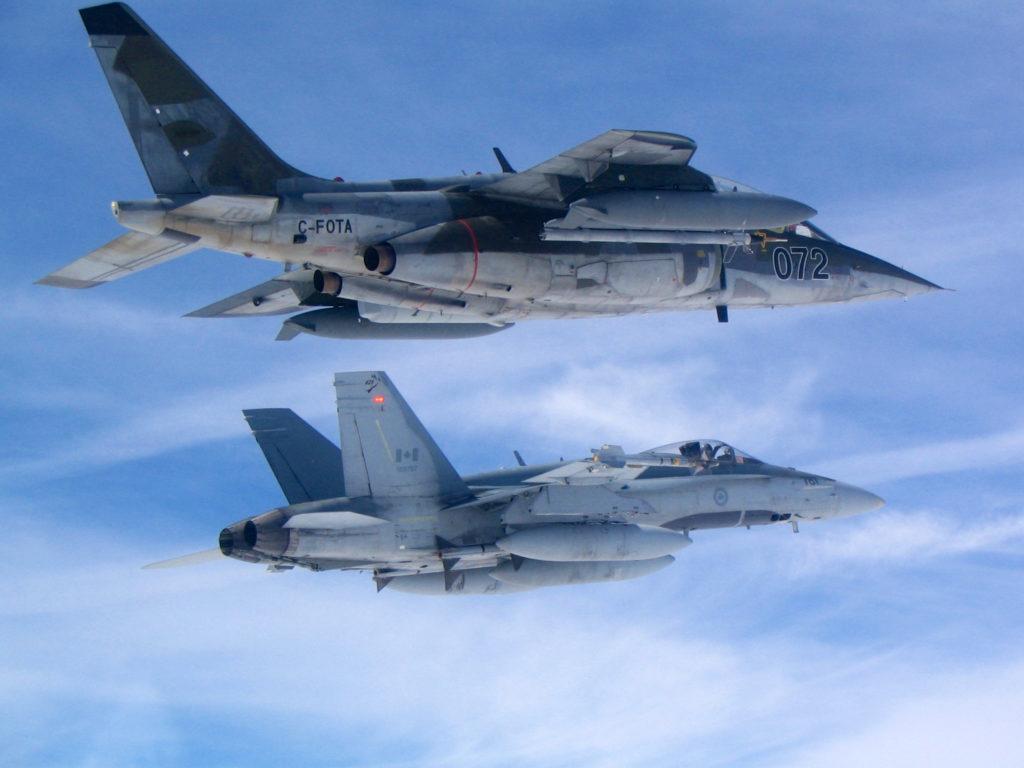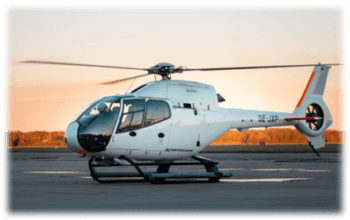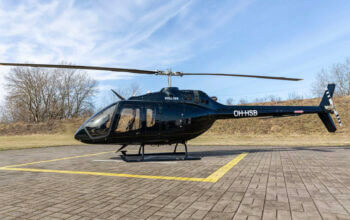Estimated reading time 7 minutes, 19 seconds.
The federal government’s request for proposals for a next-generation fighter jet may be delayed until July, but the company that provides aggressor or “red air” training for the fighter fleet is already preparing for a more data-driven training environment.

“More and more, that is how you fight: Take data, process data, share data, accomplish the mission,” said Paul Bouchard, a former CF-188 Hornet pilot and the president and CEO of Montreal-based Top Aces. “We have put a lot of thought into that.”
In October 2017, Top Aces, then under the banner of Discovery Air Defence, edged out a joint venture between CAE and Draken International to retain the Contracted Airborne Training Services (CATS) contract, a program it pioneered in the mid-2000s. The 10-year deal is worth $480 million, but includes options that could extend the service to 2031 and the value to as much as $1.4 billion.
Though the CATS contract cemented the company’s footprint in Canada and strengthened its export potential, Bouchard said it will have to evolve to meet a changing training environment.
“CATS is the largest program of its kind in the world today,” he told Skies during an interview at CANSEC on May 30. “That allows us to deliver the current service and have growth potential within that for Canada, which we think is really exciting given the next generation fighter and the future aircrew training program — as they roll out, there will be a need for more advanced training.”
That will likely mean the addition of a more advanced aircraft such as the Lockheed Martin F-16A to the Top Aces fleet of Dornier Alpha Jets and Bombardier Learjet 35As, if the Royal Canadian Air Force acquires the Lockheed Martin F-35A Joint Strike Fighter.
“That is quite logical,” said Bouchard, though he noted that a decision on the next training jet for the Fighter Lead-In Training (FLIT) program could also be a factor in any future fleet.
“What’s interesting for Canada is whether they will treat programs like FLIT and advanced adversary as separate or combine them, because the capabilities required for both those aircraft could be quite similar,” he said.
The company has invested significantly in a flexible and expandable proprietary mission system architecture for its aircraft to “effectively plug and play different applications or capabilities” as the Air Force, Canadian Army and Royal Canadian Navy develop their digital networks and synthetic training environments.
As part of the CATS requirements to enhance training, Top Aces has begun modifying both the Alphas and Lear jets at its facility in Bagotville, Que., updating avionics suites, electro-optical and infrared capability, and night vision systems. It is also configuring some Learjets into special mission aircraft.
Consequently, Bouchard said the “workhorse” Alpha Jet would remain the prime adversary fighter for the foreseeable future, and he suspects that could involve more enemy role playing with new pilots as the Air Force seeks to introduce more advanced skills earlier in the training curriculum.
“I think that is what is likely to occur,” he said. “As that gets pushed down, it creates an opportunity for CATS and future aircrew training to take on more of the mandate that was inside the CF-188 training pipeline for years, including at 419 [Tactical Fighter Training Squadron].”
Top Aces is not one of the qualified bidders for the Future Aircrew Training program (FAcT), but he believes the company has some insight to support any future primate contractor.
“We think we offer a very deep understanding of how the Air Force trains, especially the fighter force,” he said. “So I think we have a role in providing expertise and the flying support as it evolves.”
The high standards set by the CATS program have been crucial to international opportunities. Top Aces secured a similar training support contract with the German Armed Forces in 2014 and, more recently, a two-year trial with the Australian Defence Force. And it will be a bidder on several large U.S. Air Force and Navy aggressor air programs, as well as a partnership with Leonardo and Inzpire on the U.K.’s Air Support to Defence Operational Training (ASDOT) program.
“Canada did it right,” explained Bouchard. “They thought through how they were going to regulate and oversee this, because it is a commercial service. Normally, it would be regulated by Transport Canada as an air regulator. But this is providing a very specialized military mission, so they formulated a MOU [memorandum of understanding] in the mid-2000s and updated it for the CATS program, and it really represents the highest standard that this type of business is regulated to in the world, and that is a calling card for us. It was a differentiator in Germany and Australia.”
He said the same market forces that drove Canada to outsource aggressor air over a decade ago are still in play and forcing many NATO allies to consider contracting red air training, opening markets in Europe and Asia.
“You have this general downward pressure on operating budgets, you have fourth generation fleets that have had to operate longer and harder than was expected, you have the impact of fifth-gen, which is significant in terms of how air forces train and how robust the training has to be, and then there is an evolving and capable threat,” he observed.
“There are less than a handful of companies in the world that are qualified to do this. We are by all metrics the world leader in terms of hours flown, programs we operate, geographic footprint, safety record. We are really proud of that. And it’s made in Canada. The CATS contract is a foundation we can build off of … I think we’re in a great position and I’m really excited for our future.”








